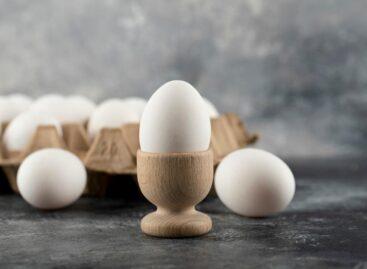Panorama of champagne before clinking glasses
The structure if the champagne market is not unlike that of wine. Differences however, are more interesting. According to György Kovács, managing director of Törley Pezsgőpincészet Kft., sweet champagnes continue to account for two-thirds of sales in the Hungarian market. This also applies to Törley products, with Törley Charmant Doux, Törley Muskateller and BB Arany Cuvée generál generating the largest revenues. Since last October-November, the market has shown expansion of between 1-2 per cent. Törley sales show an increase of 3-9 per cent in terms of value, in the last 14 months and there is a shift in demand towards higher quality champagnes. In lower price segments, sweet champagnes dominate, but as we move higher up, we see an increasing number of dry champagnes. Half or two-thirds of champagne sales take place in the last quarter of the year, though distributors have been trying to prolong the season for years. – In our experience, consumers like to drink champagne in the summer, as well. The summer season is the second strongest after Christmas – say György Kovács. The oldest champagne producer in Hungary, Cezar Winery in Pécs is committed to upholding the tradition of classic champagne fermented in bottles. When they conducted a survey to find out what are the limiting factors in the way of expanding sales, it was found that – unlike in many other countries -champagne is still regarded as a drink for special occasions in Hungary. According to Ádám Hébenstreit, sales director of Cezar Winery Kft., there are many reasons why this is so, but the most important one is probably the ceremonial character of drinking champagne. In the light of this conclusion, they modified their innovation strategy in order to introduce champagne into environments where it had not been seen before. This is how the 250 millilitre, canned CEZAR Blanc de Blancs and CEZAR Crispy Rosé have been developed. Károly Gundel, sales director of Helibor Szövetkezeti Pincészet, thinks that it is the intention of every champagne producing enterprise to eliminate the seasonal character of champagne consumption, but this is not an easy task. Annual sales of 2,5 million bottles make Helibor the second largest domestic producer. – It does not make life easy for us that most sales are generated by hyper markets where possibilities of storage are very limited. This only allows us to maintain a spectacular presence in the last weeks of the year – says Károly Gundel. Bio Chardonnay champagne is intended for a new target group – health conscious consumers. Their other new product, Muscat d’or can become a favourite of young people with its muscatel flavour, low alcohol content and modern appearance. While it has become trendy to be familiar with wine in recent years, the same does not apply to champagne. – The lack of knowledge has an influence on the logic used by consumers for making decisions – say Ádám Hébenstreit Ádám. Consumers are only interested in the brand, dryness (sweetness) and price. Though a retail price of HUF 1,200-1,800 is perfectly acceptable for good quality red wines, this is regarded as too high for champagnes. The long term objective of Helibor Szövetkezeti Pincészet is to achieve as high a market share among premium champagnes as possible. The brands Arany Sárfehér and the new Szent István product line serve this objective. As a result of strong brands and the absence of conscious consumers, only few people are open to innovation in the champagne market. In the lower price segment, only price matters. In the medium price segment, brand loyalty is extremely strong. Openness to innovation and experimenting can only be seen in the high price segment. Two brands of the Törley group, Törley and BB hold a combined market share of 55 per cent in terms of volume and an even higher one in terms of value. They are also successful in Estonia, where they are the market leaders, and in norway, Sweden, Latvia, and Finland.
Related news
Related news
Egg prices up nearly one-third
🎧 Hallgasd a cikket: Lejátszás Szünet Folytatás Leállítás Nyelv: Auto…
Read more >Too many gifts, too much food: our holiday excesses are putting a serious strain on the environment
🎧 Hallgasd a cikket: Lejátszás Szünet Folytatás Leállítás Nyelv: Auto…
Read more >You can now pay utility bills with qvik
🎧 Hallgasd a cikket: Lejátszás Szünet Folytatás Leállítás Nyelv: Auto…
Read more >



